|
| |
|
Tips for Beginning a Collection
by Bob Brooke
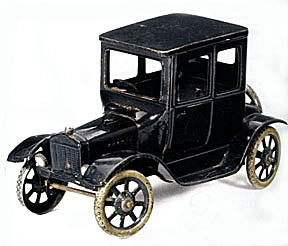 Collecting
is an American pastime. It’s part of the American character. We collect
just about everything. Antiques and collectibles make up the majority of
American collections. But for many collecting begins as a impulse, often
based on memories from their childhood. Collecting
is an American pastime. It’s part of the American character. We collect
just about everything. Antiques and collectibles make up the majority of
American collections. But for many collecting begins as a impulse, often
based on memories from their childhood.
To begin with, collect what you like, not something you think you should
collect because it’s trendy. Don’t collect for investment. Instead,
collect for the fun, for the thrill of the hunt. The fun of collecting
is finding and purchasing objects.
Memories and Collecting
It’s been proven that memories drive collecting. The objects many people
choose to collect usually relate to their childhood—the decorations in
their parents’ home, their toys, things that they wished they had owned
but couldn’t afford, and objects they bought for their first house.
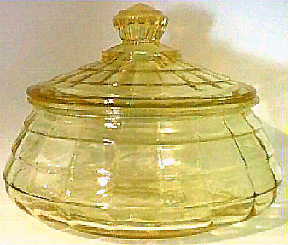 Acquiring
an object gives you the first information you have about it—where you
discovered it, why you purchased it, what you paid for it. It gives you
something to talk about when you don’t know anything else about the
piece. Acquiring
an object gives you the first information you have about it—where you
discovered it, why you purchased it, what you paid for it. It gives you
something to talk about when you don’t know anything else about the
piece.
After acquiring a number of pieces, you’ll get involved with managing
your collection— what pieces to add next, what pieces to add in the
future, and what and how you choose to display it. For many collectors,
selling an object ends their connection to it and can be a painful
experience. So most true collectors hold onto their collections for
their entire lives.
So if you’re going to put that much energy and effort into your
collection, you need to do a few things right.
Tips for Beginners
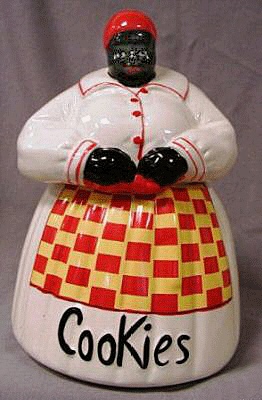 To
begin with, don’t start out with “wallet whipping”—that is, whipping out
your wallet and going on a buying spree, buying every object in your
chosen category without knowing anything about it. To
begin with, don’t start out with “wallet whipping”—that is, whipping out
your wallet and going on a buying spree, buying every object in your
chosen category without knowing anything about it.
Before starting a collection, you need to do some research in your
chosen category. Learn what’s collectible, how much things are going
for, and a general history of the pieces. Understand how to distinguish
common from scarce examples, compare prices in a wide variety of
markets, develop a collecting plan, or take into consideration the
amount of money you have to spend or the space available to display and
store your pieces. Wallet whipping wastes money—money you could use to
build your collection.
Virtually everything you may choose to collect in antiques or
collectibles has been mass-produced. So you need to find out how many
examples might have been made and what their survival rate might be.
You’ll discover that this first piece of information is extremely
difficult to obtain since manufacturers have long coveted their
production figures. And to further complicate the issue, many companies,
which made the antiques and collectibles you want to collect, have long
ago gone out of business. You can safely assume that the objects you’re
considering for your collection were made in large quantities, perhaps
in the hundreds of thousands. It’s smart to assume more than less.
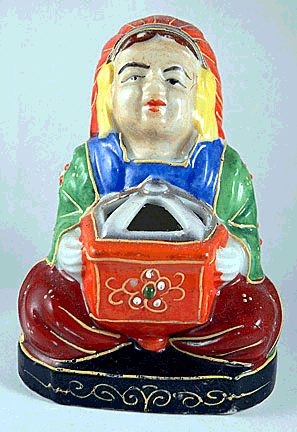 Determining
the survival rate of the objects you’re considering is easier. It used
to be that collectors had to discover through various means how many of
the objects had been sold at antiques shows, antique shops, and
especially at auction. And based on the information they gathered, they
could then place the object at somewhere between scarce and quite
common. Determining
the survival rate of the objects you’re considering is easier. It used
to be that collectors had to discover through various means how many of
the objects had been sold at antiques shows, antique shops, and
especially at auction. And based on the information they gathered, they
could then place the object at somewhere between scarce and quite
common.
Though the Internet has made this process easier, you have to be
cautious when determining an object’s survival rate. Don’t make the
mistake of many beginning collectors and only use eBay to see what’s
selling and the general value of the objects you’re interested in. While
eBay has demonstrated that the survival rate of objects is far higher
than previously assumed, the prices that you may find on eBay aren’t
necessarily the going rates. Many eBay sellers, themselves
inexperienced, often inflate their asking prices. And the bidding
process can drive the prices up beyond reasonable levels. It’s better to
survey a number of online auction sites to get an overview of what’s
happening with objects in your chosen category.
The easiest and safest approach is to assume the object at which you’re
looking to buy is extremely common. The reason you’ve probably never
seen one before is that you weren’t looking for one.
Don't Forget to Do Research
Once you have selected an object category you would like to collect,
allow several months to do research. Most beginning collectors lack the
patience to really look into an object’s history. Following the "I want
it now" approach results in instant gratification, but it can also lead
to costly mistakes.
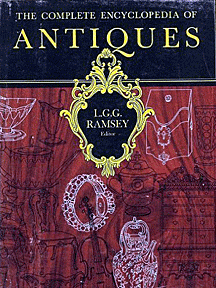 To
make sure you’re on the right track, obtain all available reference
books dealing with the category. Read them, and don’t just look at the
pictures. While there are many articles published by antiques trade
magazines, there’s no index for them, so it’s nearly impossible to
locate back articles dealing with your collecting category. To
make sure you’re on the right track, obtain all available reference
books dealing with the category. Read them, and don’t just look at the
pictures. While there are many articles published by antiques trade
magazines, there’s no index for them, so it’s nearly impossible to
locate back articles dealing with your collecting category.
Join a collectors’ club for your chosen category, if there is one. And
if the collectors' club has a newsletter, ask if you can purchase three
or four years worth of back issues to study.
Search the Internet. Begin with a search looking for general information
about the manufacturer and collecting category as a whole. Once you’ve
completed your general search, start following eBay auction results.
This is the first step to obtaining two key pieces of information— the
frequency of appearance of objects and the price ranges in which they
sell. Again, be cautious.
Get out into the field. With antiques and collectibles, Internet
knowledge is no substitute for hands-on knowledge. The two go together.
The field allows you to establish a list of antiques dealers from which
you can make multiple purchases. Antiques dealers will often look for
pieces for your collections if they know what you’re looking for.
Plan Ahead
Once you have done your homework, it’s time to make a list of the
objects that you’d like in your collection. Prioritize your list and
place the following information in columns: the name of the object,
whether it’s easiest to find, more difficult to find, or hardest to
find, and the amount the price range that you’re willing to pay. Use
your list as a guide from which you can deviate when opportunity
presents itself.
Purchase only objects that are complete and in very good or better
condition. Don’t buy those of lesser quality and plan to upgrade. You
probably won’t. When you do find a better example, you’ll put the lesser
example in storage.

One thing is important to remember when beginning a new
collection—common sense. You should use only discretionary income for
your purchases. You need to set and stay within a budget. There are
plenty of collecting opportunities no matter what your budget. Remember,
you don’t have to buy constantly. You should add to your collection as
your time and finances allow.
Also, collect based on the space you have available. Most people ignore
this advice. Most collectors have less than one quarter of their
collections on display. Remember, you've brought the collection into
your life, not the other way around. Don't allow your collection to
control your life. Live with it and make it part of your life. If the
objects in your collection can be used, use them. However, if they’re
more valuable, you may want to only display them.
Lastly, don't forget that collecting is an addiction. Sooner or later
you'll be hooked. And there's no Collector's Anonymous to turn to for
help.
< Back to Collecting Archives
Next
Article >
|
|

|
|
FOLLOW MY WEEKLY BLOG
Antiques Q&A
JOIN MY COLLECTION
Antiques and More
on Facebook
LIKE MY FACEBOOK PAGE
The Antiques
Almanac on Facebook |
|
No antiques or collectibles
are sold on this site.
|
|
How to Recognize and
Refinish Antiques for Pleasure and Profit
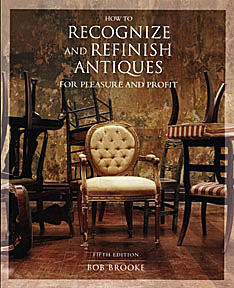
Have
you ever bought an antique or collectible that was less than perfect and
needed some TLC? Bob's new book offers tips and step-by- step
instructions for simple maintenance and restoration of common antiques.
Read an
Excerpt
|
|

|
|
|
|
|
